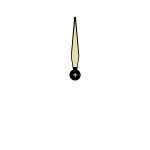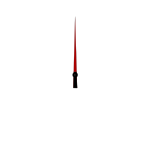Chapter I - Watch 101
Section I - Why need a watch?
Why one needs a wristwatch?
One Minute Brief History of Wristwatch
Mechanical Movement Evidences the Progress of Civilization
Why one needs a wristwatch?
When talking about watches, people usually come up with lots of questions. Those most often heard are why do I need a wristwatch? What kind of wristwatch suits me, or him, or her? How to select a wristwatch? To answer these questions, let us begin with the fundamental question about watch - why do we need a time measuring device.
The significance of clocks and watches is for time telling, but in modern technology-enriched society, we have many different ways to tell time, even mobile phones that in almost everyone’s hands can also be a precise timekeeping device. Why, then, there are still all kinds of different watches? As a matter of fact, watch sales numbers are extremely huge. Global watch annual sales figures are tens of billions of US dollars! The number of watch brands is thousands upon thousands and prices vary from a few US dollars to millions of US dollars a piece. So, what is the purpose of buying a watch? Each person has his or her own purpose of selecting and buying a watch, some want it as a status symbol, some need it for styling and fashion purposes, some want it to show their life attitude, some need it for timekeeping, and some have no particular purpose, they just simply like it. But what makes prices of watches vary in such a great extent? To understand these issues, we should first have some basic knowledge about the history and background of timepieces.
One Minute Brief History of Wristwatch
Watches are one of the greatest inventions in human history. Without it, human civilization could never be such a progress. From as basic as daily routines to as significant as the development of science, all require the mastery of time. However, it is a very difficult thing to measure time in precise. In ancient times, people could only rely on the color of the sky and the height of the sun to determine time. Later, ancient Egyptians discovered the length of the shadow changes as the sun moves, and thus, invented the sundial. The sundial, however, can only be used during sunny day. Thereafter, people discovered that the flow of water or the burning of an object has a fixed time pattern, which inspired the inventions of other time measuring methods such as the water clock and candles burning. During these days, time measurement was general, imprecise, or inconvenient. Until the year of 1088, Su Song and Han Gong-Lian from the Chinese Song Dynasty created the first clock tower with escapement regulator, which was made up of the time steelyard-clepsydra device and the waterwheel lever escapement. Escapement is one of the two essential parts of all modern mechanical watch movement. Without escapement, the movement will not be able to control the periodic release of energy and thus cannot achieve its precision in time measurement. Not until the year of 1657, hairspring, another important part for mechanical watch, was added to the balance wheel and had greatly increased the accuracy of pocket watches. Prior to this, balance wheel used in pocket watch or clock generated great deviation due to the effect of changes in drive force. When the mainspring runs down, clocks and watches will slow down. Timekeeping device without isochronous can only measure hour accurately, so by that time, clocks and watches did not have minute hand. Since the invention of hairspring, together with the development of the Pallet Fork since 1759, error of time measuring devices greatly reduces from a few hours a day to around ten minutes a day, the minute hand was then added to the clock. Also in 1704, the existence of Jewel bearing has further increased the precision of clocks and watches by reducing the gear friction. Since then, the basic structure of the watch movement has roughly developed. During thousands of years of human civilization, it is not until the 17th century that the time measuring device has come into its shape and precision. Along with the development of the time measuring device in the 17th century, extensive development in technology and civilization has begun.
Since 18th century, various inventions of machine tools allowed mass production of clock and pocket watch. At that time, however, pocket watch was just a luxury toy and the wristwatch has not been developed yet. Thanks to the emergence of flight instruments which inspired the development of wristwatch. The earliest wristwatch was just a pocket watch attached to a leather strap wearing around the wrist, and it was not popular. Until the early 19th century, Alberto Santos-Dumont, an aviation pioneer, made complain to his friend, Louis Cartier, about the inconvenience of using pocket watch during his flight, Cartier, thereafter, developed the first pilot watch – the Santos collection. This collection, up-to-date, is still in production and has become one of Cartier’s classic series! But not known by many, the Santos collection is actually the pioneer of pilot watches, which is also known as the first mass-produced wristwatch. Later during the First Boer War, development and production of watches have a substantial growth due to the great need of coordinating troop movements and synchronizing attacks. Since 1917, the British War Department began giving soldiers wristwatches. At that time, one soldier in every four wore a watch, and the other three have to get one soon as they could. Until the end of the war, almost every soldier was given a watch. After war, wearing a watch has become a fashion. In another word, military and pilot watches have accelerated the development of watches by decades. In appreciation of the pilot watch’s contribution to the development of wristwatch, DELTAt’s first production of watches is a collection of pilot watches, SoRa and SoRa 1918.
Mechanical Movement Evidences the Progress of Civilization
As aforesaid, mechanical wristwatch has been developed along with the progress of human civilization, and has evidenced thousands of years of development. It is very difficult to make precise time measurement by using only the mechanical way, so the mechanical movement is actually an exquisite art work collaboratively created, crafted, and nourished by a few thousand years of civilization and mechanical engineering development. Each mechanical movement can, therefore, be valued as an art piece full of life! When hearing the ticking sound of the mechanical watch, it seems like listening to the heartbeat of the movement. Each component of the wristwatch has also undergone thousands of years of transformation in order to become its shape of today, and therefore, watches have the quality to attract souls. Since 1970s, the introduction of quartz movement overturned the world of mechanical watches and had almost killed them. Mechanical watches were approaching extinction during this quartz crisis and it was not easy for them to regain their world recognition. Today, both the mechanical movement and non-mechanical movement have their own position in the market, and each has its own marvelous outcome and prospect. We, DELTAt, have indelible love and passion for mechanical movement, and this is why we use high-quality mechanical movement for the majority production of our watches. For particular designs and models, however, we have to use non-mechanical movement because of mechanical movement’s limitations for certain features.
_








